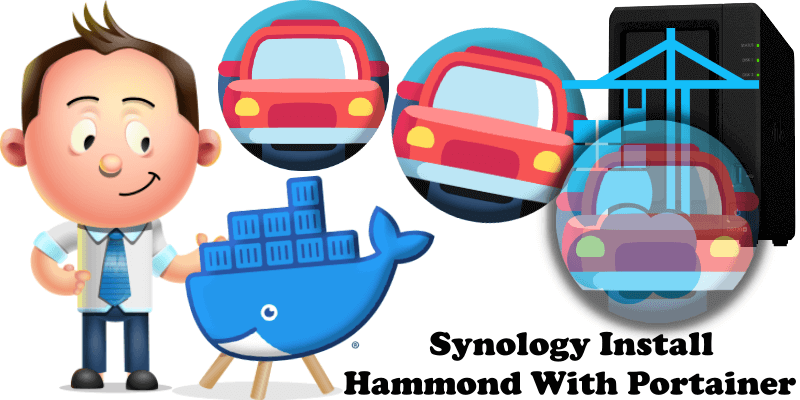
My previous guide for Hammond involved the use of Task Scheduler. Today I’m offering a recommended and excellent alternative for installing the latest Hammond version via Portainer. Hammond is a self hosted vehicle management system to track fuel and other expenses related to all of your vehicles. It supports multiple users sharing multiple vehicles. It is the logical successor to Clarkson which has not been updated for quite some time now. In this step by step guide I will show you how to install Hammond on your Synology NAS using Docker & Portainer.
This guide works perfectly with the latest Hammond v0.0.24 release.
STEP 1
Please Support My work by Making a Donation.
STEP 2
Install Portainer using my step by step guide. If you already have Portainer installed on your Synology NAS, skip this STEP. Attention: Make sure you have installed the latest Portainer version.
STEP 3
Go to File Station and open the docker folder. Inside the docker folder, create one new folder and name it hammond. Follow the instructions in the image below.
Note: Be careful to enter only lowercase, not uppercase letters.
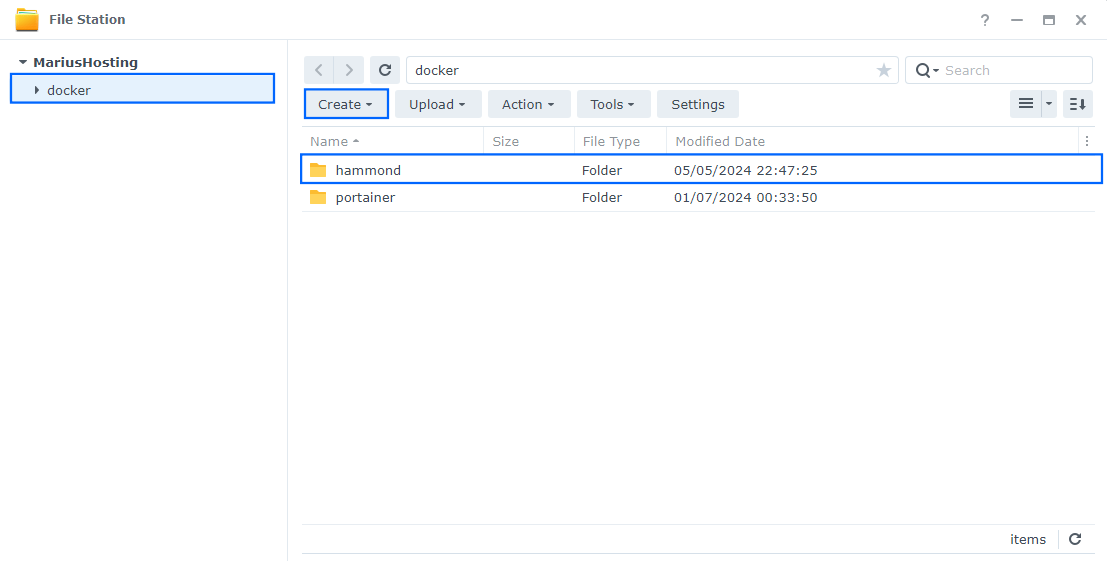
STEP 4
Now create two new folders inside the hammond folder that you created at STEP 3 and name them data and config. Follow the instructions in the image below.
Note: Be careful to enter only lowercase, not uppercase letters.
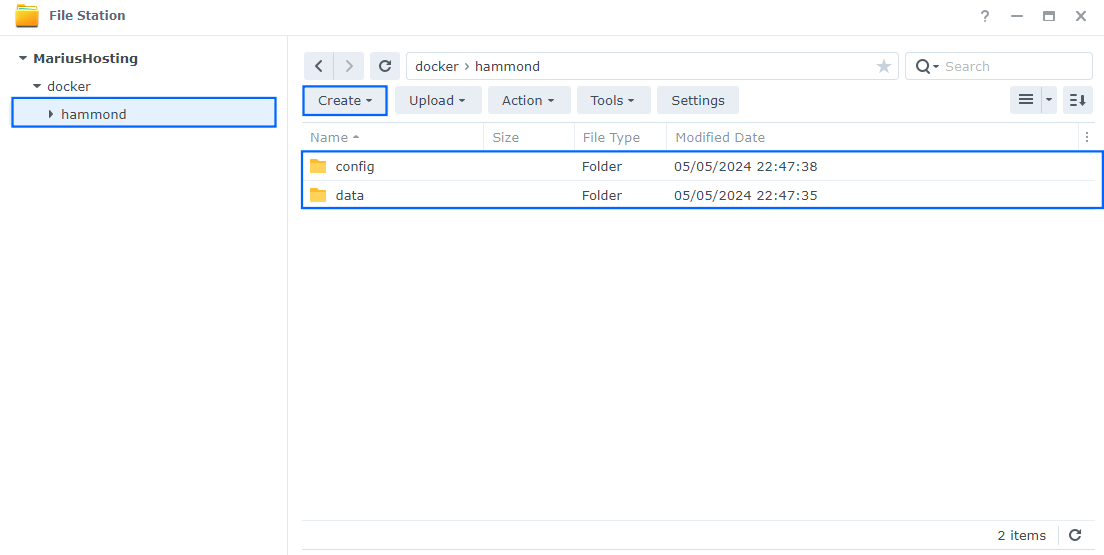
STEP 5
Log into Portainer using your username and password. On the left sidebar in Portainer, click on Home then Live connect. Follow the instructions in the image below.

On the left sidebar in Portainer, click on Stacks then + Add stack. Follow the instructions in the image below.

STEP 6
In the Name field type in hammond. Follow the instructions in the image below.
services:
hammond:
container_name: Hammond
image: alfhou/hammond:latest
security_opt:
- no-new-privileges:false
- seccomp:unconfined
environment:
JWT_SECRET: dOxZYTTZgXKMHkqLBIQVImayQXAVWdzGBPuFJKggzcgvgPJPXpWzqzKaUOIOGGIr
volumes:
- /volume1/docker/hammond/config:/config:rw
- /volume1/docker/hammond/data:/assets:rw
ports:
- 3200:3000
restart: on-failure:5
Note: Before you paste the code above in the Web editor area below, change the value for JWT_SECRET. (Generate your own Random 64 length JWT_SECRET.)
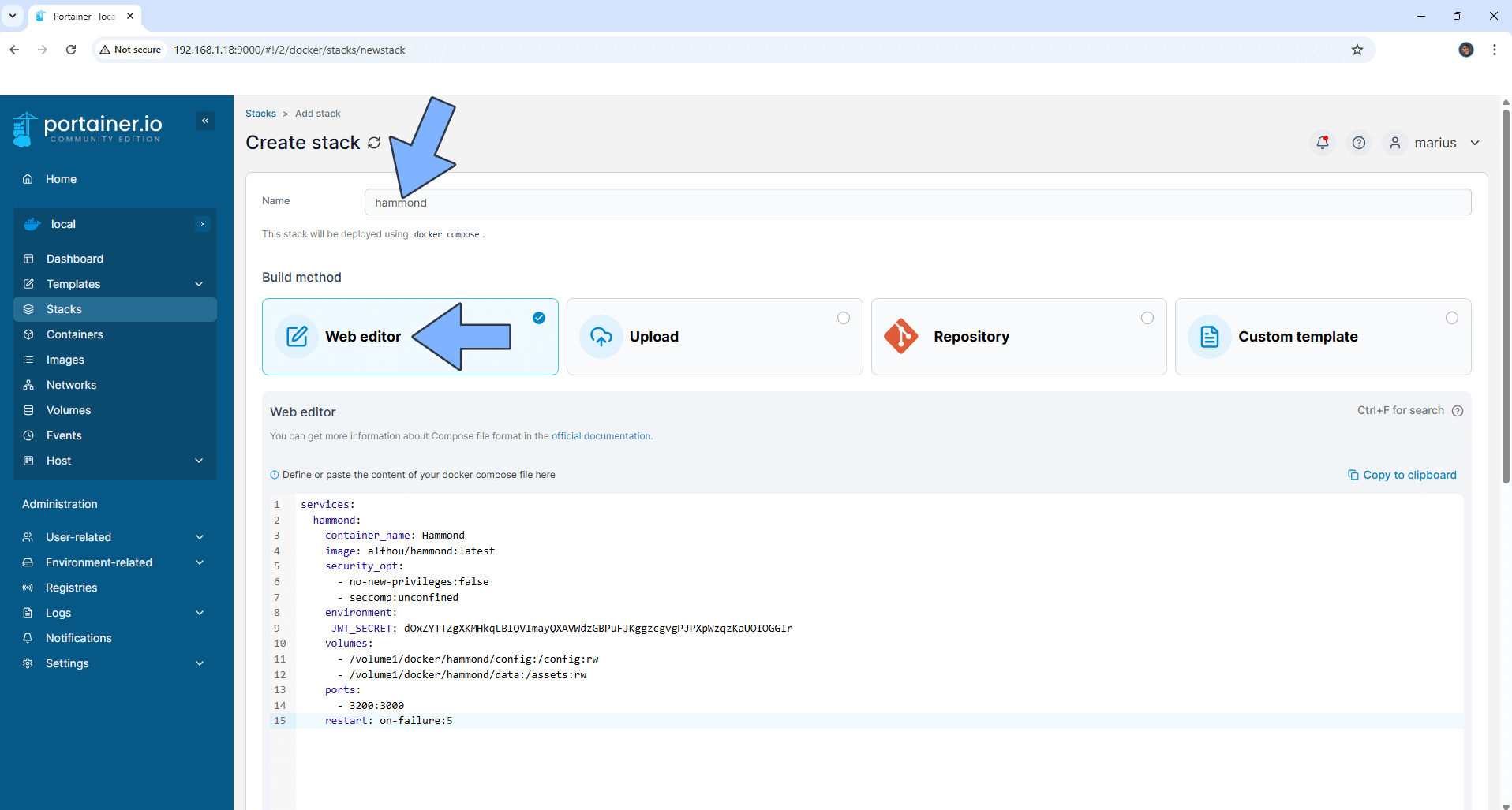
STEP 7
Scroll down on the page until you see a button named Deploy the stack. Click on it. Follow the instructions in the image below. The installation process can take up to a few minutes. It will depend on your Internet speed connection.
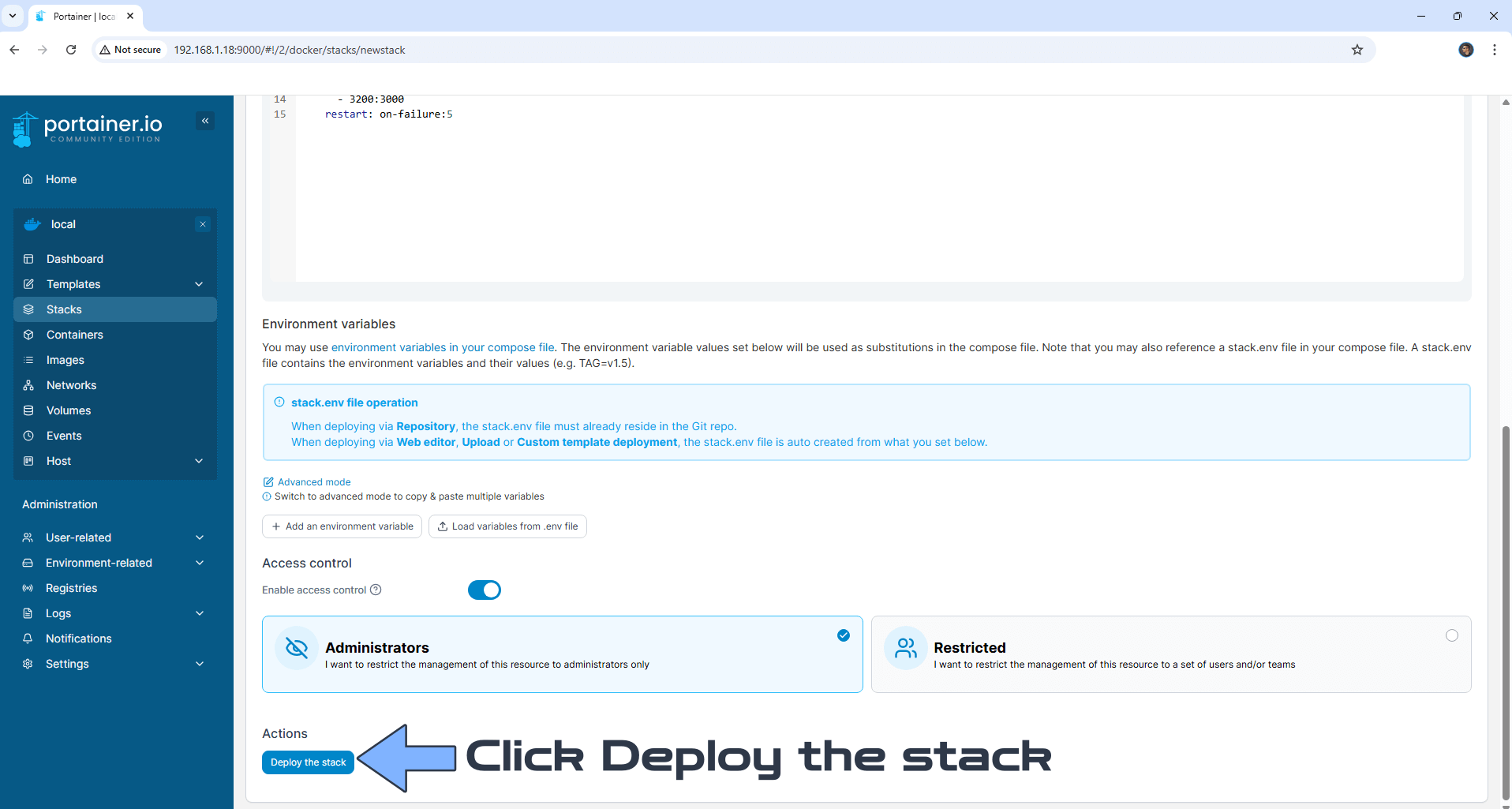
STEP 8
If everything goes right, you will see the following message at the top right of your screen: “Success Stack successfully deployed“.

STEP 9
🟢Please Support My work by Making a Donation. Almost 99,9% of the people that install something using my guides forget to support my work, or just ignore STEP 1. I’ve been very honest about this aspect of my work since the beginning: I don’t run any ADS, I don’t require subscriptions, paid or otherwise, I don’t collect IPs, emails, and I don’t have any referral links from Amazon or other merchants. I also don’t have any POP-UPs or COOKIES. I have repeatedly been told over the years how much I have contributed to the community. It’s something I love doing and have been honest about my passion since the beginning. But I also Need The Community to Support me Back to be able to continue doing this work.
STEP 10
The installation process can take up to a few seconds/minutes. It will depend on your Internet speed connection. Now open your browser and type in http://Synology-ip-address:3200/initialize Click Fresh Install. Follow the instructions in the image below.
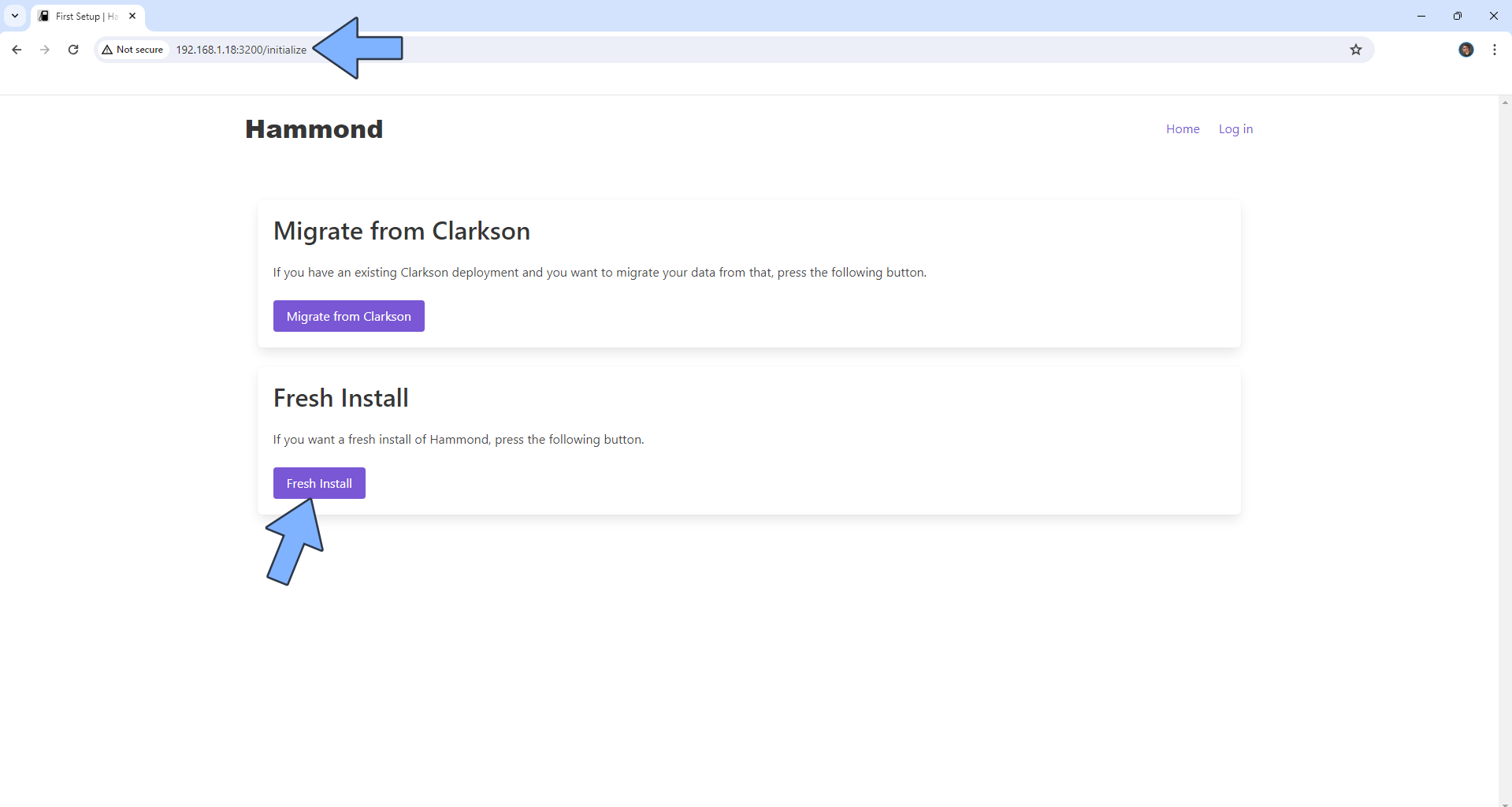
STEP 11
Add your own Name, Email and Password. Select your Currency and Distance Unit, then click Save. Follow the instructions in the image below.
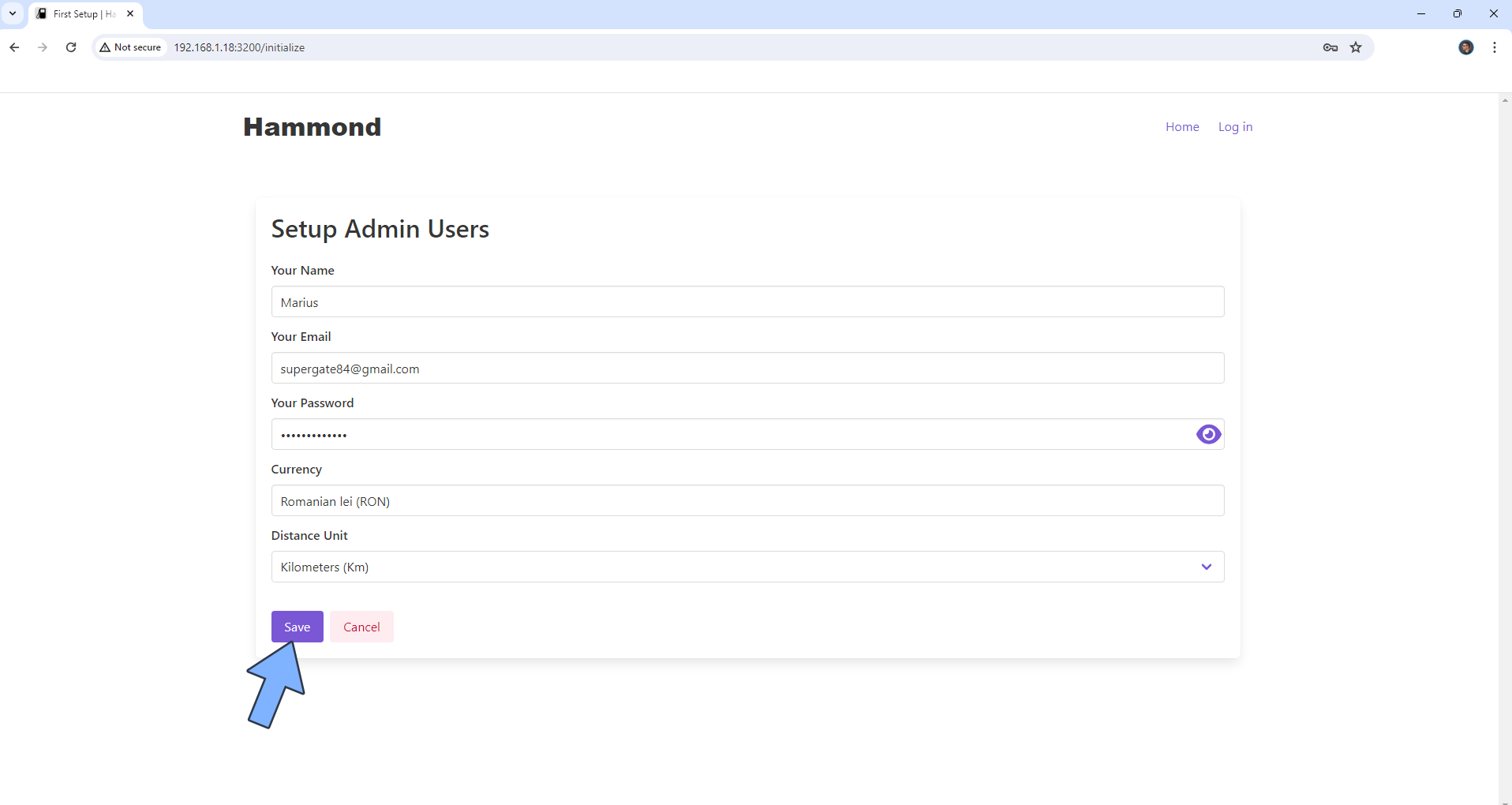
STEP 12
After you click save, you will get a message that says: “You have been registered successfully. You will be redirected to the login screen shortly where you can login and start using the system.” If the automatic redirect does not work, access the login page by connecting to http://Synology-ip-address:3200/login Follow the instructions in the image below.
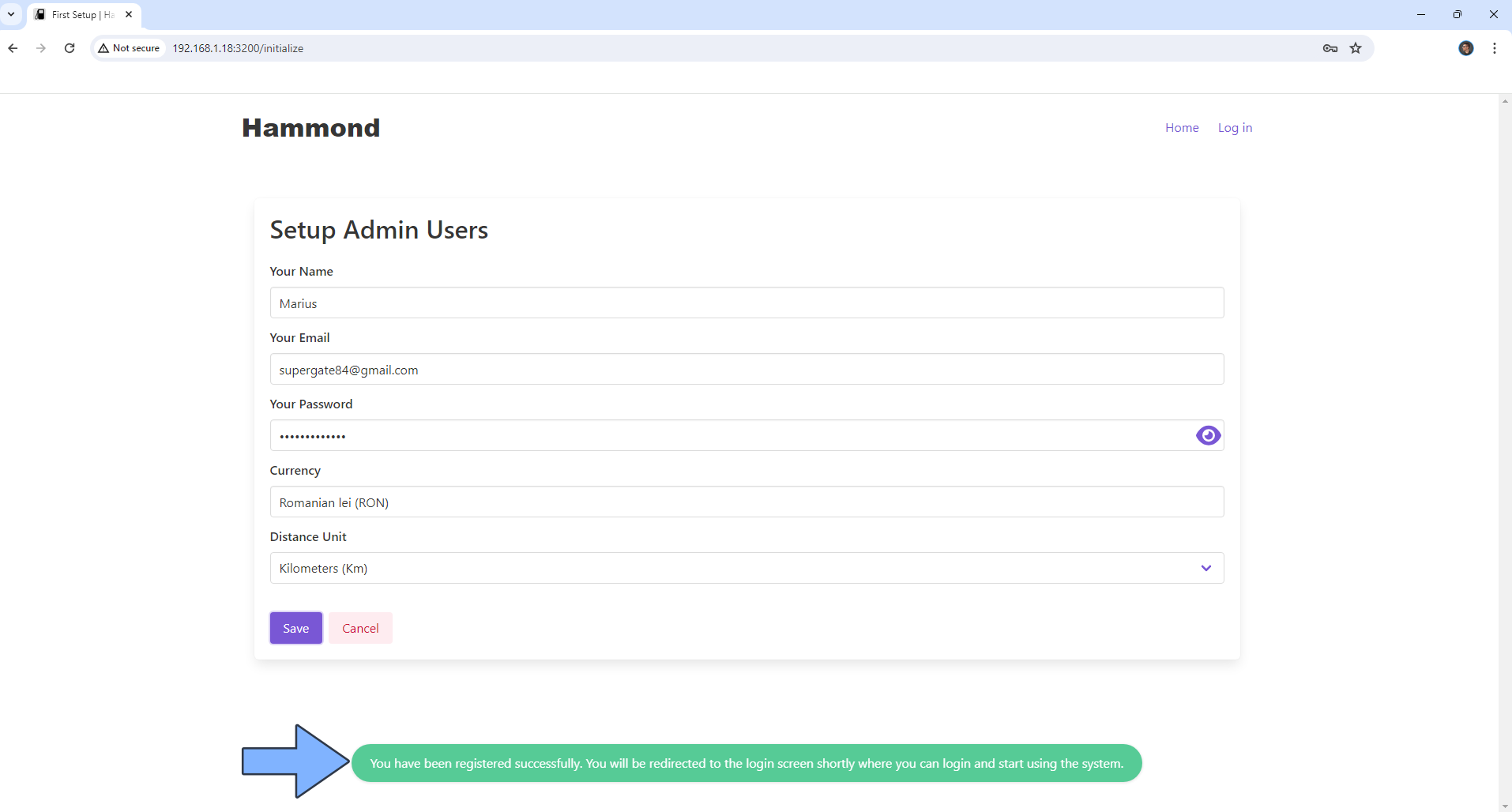
STEP 13
After you connect to the http://Synology-ip-address:3200/login add your own Email and Password that you have previously chosen at STEP 11. Follow the instructions in the image below.
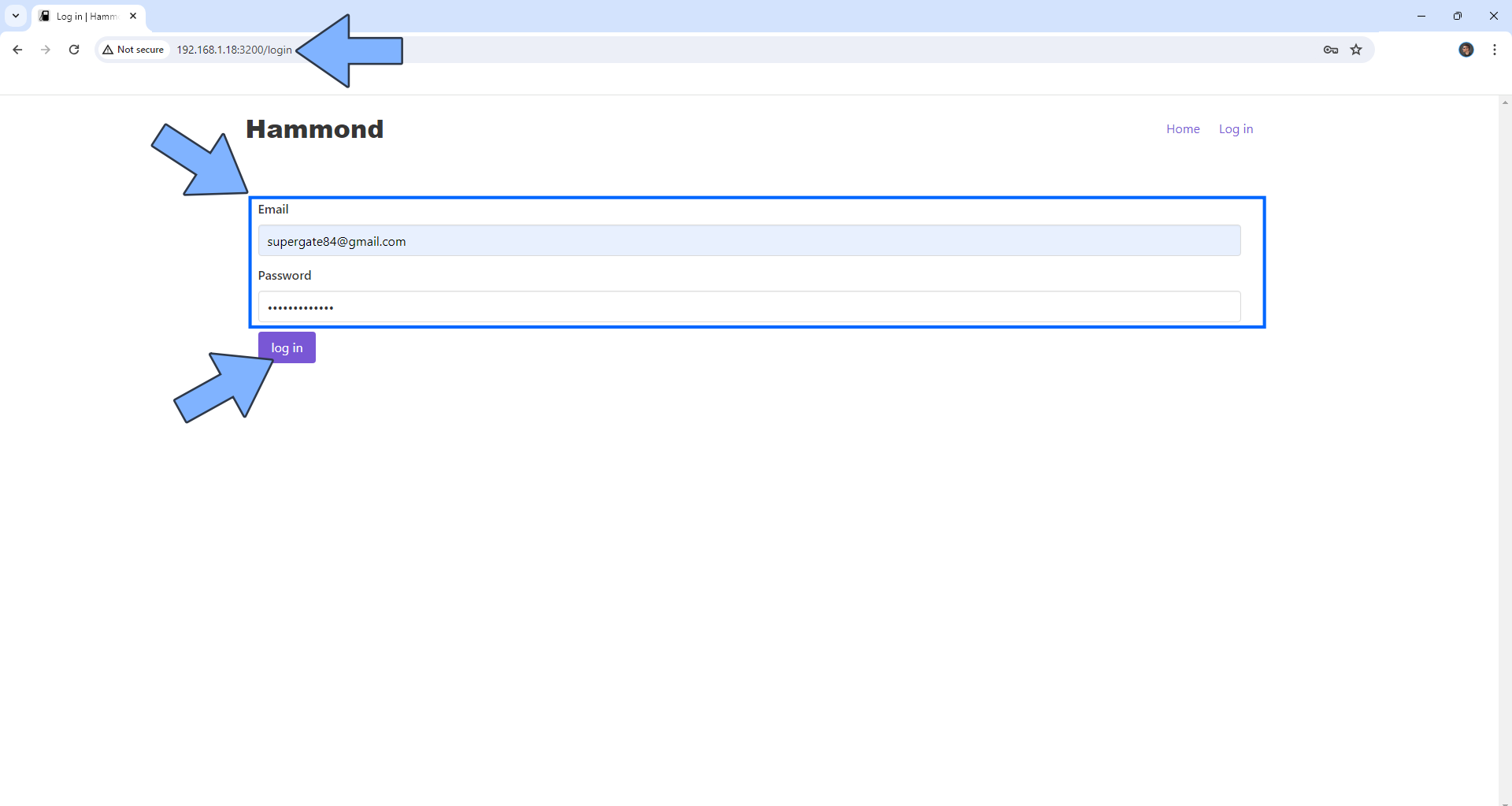
STEP 14
Your Hammond dashboard at a glance!
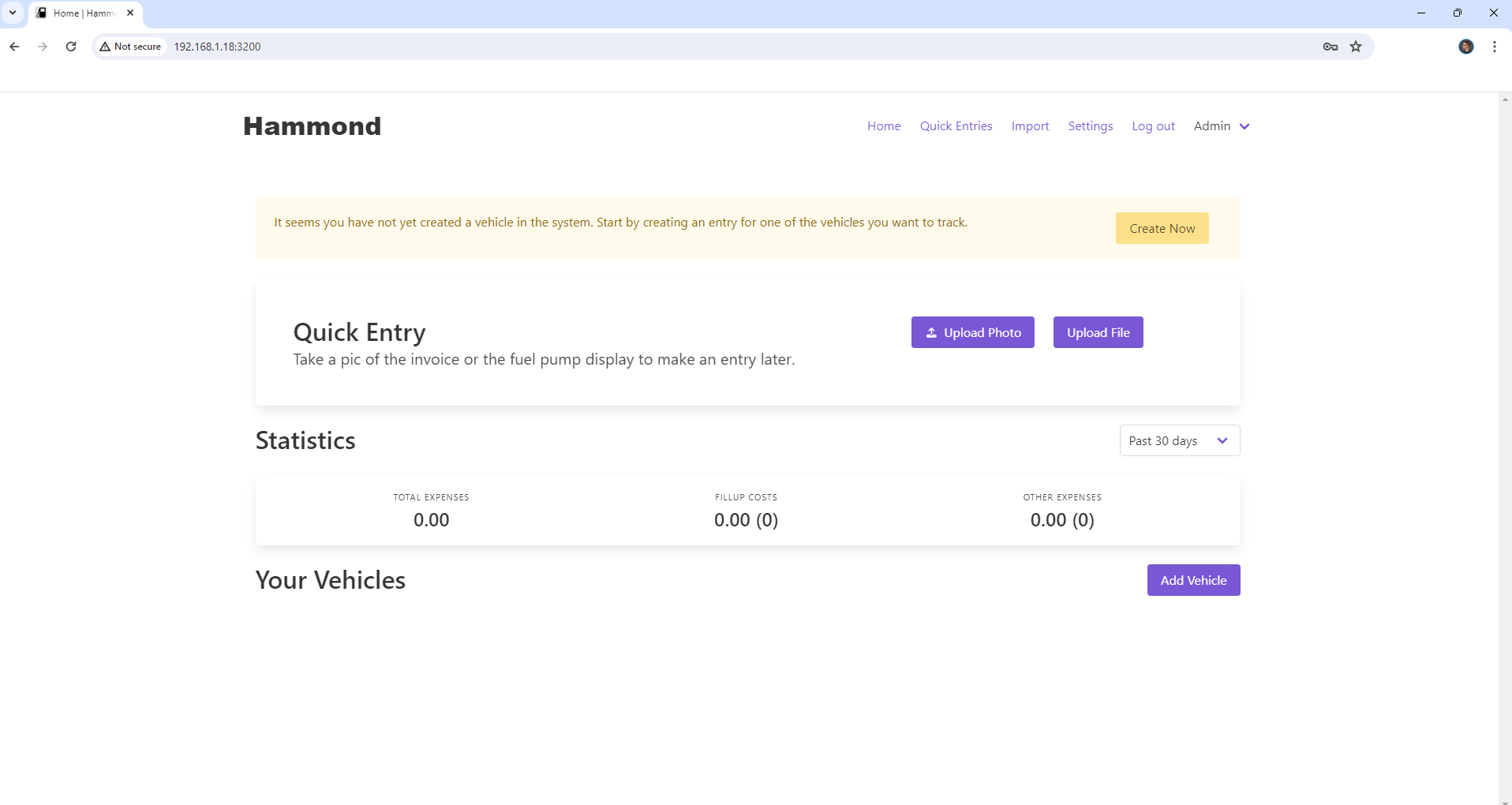
Enjoy Hammond!
If you encounter issues by using this container, make sure to check out the Common Docker issues article.
Note: If you want to run the Hammond container over HTTPS, check How to Run Docker Containers Over HTTPS. In order to make Hammond work via HTTPS, it’s mandatory to activate WebSocket.
Note: Can I run Docker on my Synology NAS? See the supported models.
Note: How to Back Up Docker Containers on your Synology NAS.
Note: Find out how to update the Hammond container with the latest image.
Note: How to Free Disk Space on Your NAS if You Run Docker.
Note: How to Schedule Start & Stop For Docker Containers.
Note: How to Activate Email Notifications.
Note: How to Add Access Control Profile on Your NAS.
Note: How to Change Docker Containers Restart Policy.
Note: How to Use Docker Containers With VPN.
Note: Convert Docker Run Into Docker Compose.
Note: How to Clean Docker.
Note: How to Clean Docker Automatically.
Note: Best Practices When Using Docker and DDNS.
Note: Some Docker Containers Need WebSocket.
Note: Find out the Best NAS Models For Docker.
Note: Activate Gmail SMTP For Docker Containers.
This post was updated on Friday / August 22nd, 2025 at 1:21 AM
